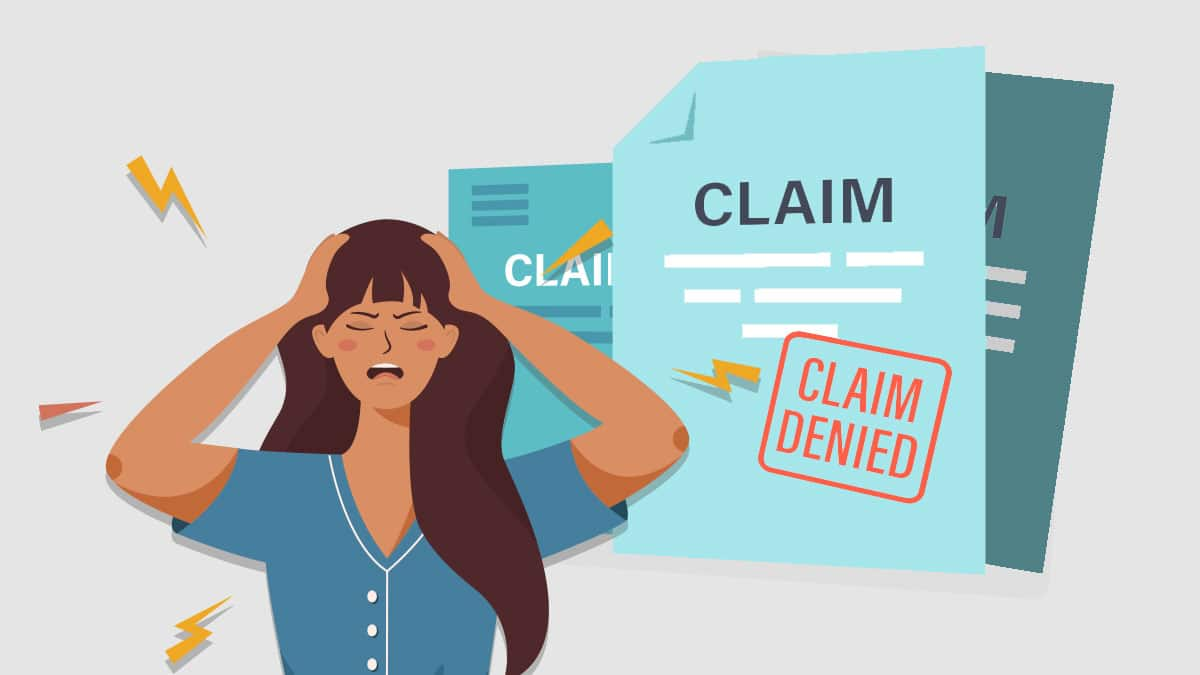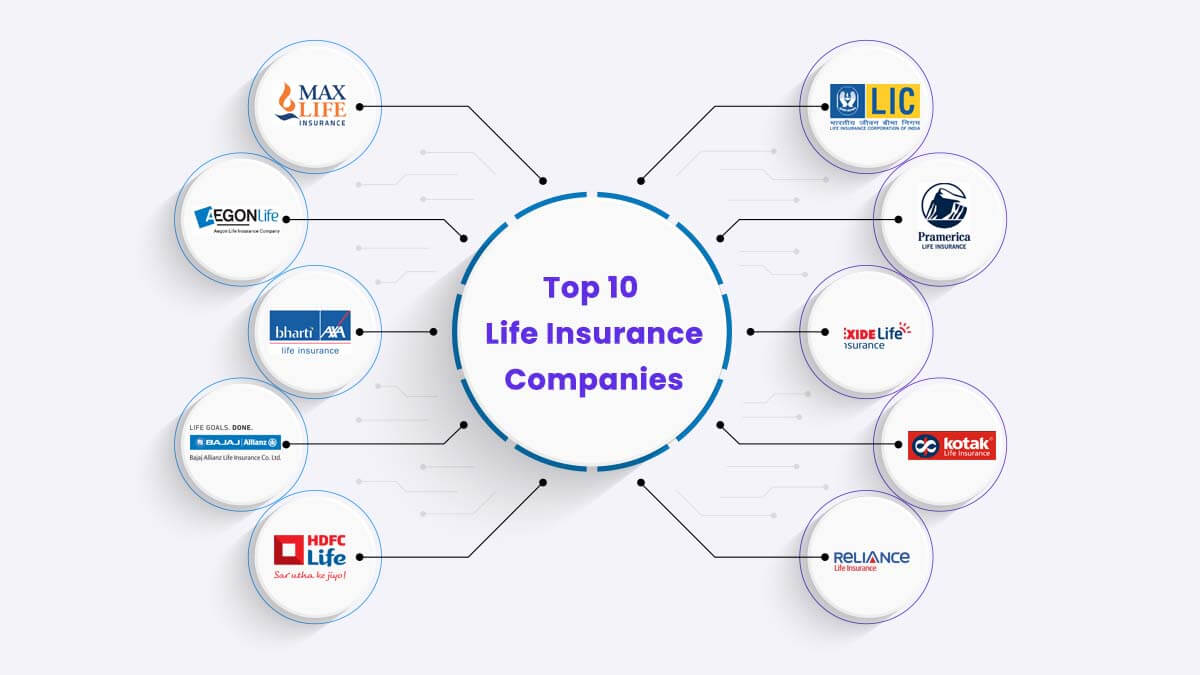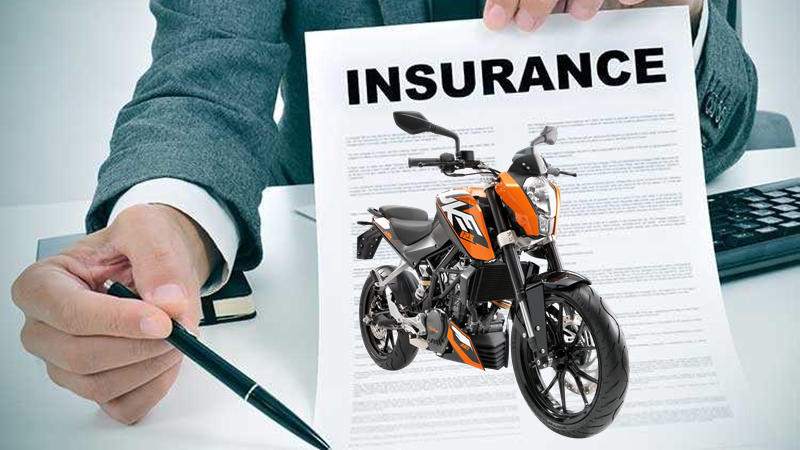Bike insurance is not just a legal requirement but a vital safeguard against unforeseen events like accidents, theft, or natural calamities. Understanding the factors that influence your bike insurance premium can help you make informed decisions and potentially reduce costs without compromising on coverage. In this detailed guide, we’ll delve into the key elements that affect your bike insurance and provide practical tips to optimize your policy.
Key Takeaways
- Vehicle Type and Engine Capacity: Larger engine capacities and high-performance bikes attract higher premiums.
- Rider’s Age and Experience: Younger and less experienced riders may face higher insurance costs.
- No Claim Bonus: Maintaining a claim-free record can lead to significant premium discounts.
- Add-on Covers: While they offer additional protection, add-ons can
Understanding Bike Insurance Premiums

Before exploring the factors affecting your bike insurance, it’s essential to understand how premiums are calculated. Insurance companies assess various risk factors associated with your bike and riding habits to determine the premium amount. These factors include:
- Insured Declared Value (IDV): The maximum sum assured by the insurer in case of total loss or theft.
- Engine Capacity: Larger engines often attract higher premiums due to increased risk.
- Rider’s Age and Experience: Younger and less experienced riders may face higher premiums.
- Location: Areas with higher traffic density or theft rates can increase premiums.
- Add-on Covers: Additional coverage options can raise the premium.
Key Factors Affecting Bike Insurance Premiums
Vehicle Type and Engine Capacity
The kind of two-wheeler you ride plays a central role in your insurance premium. Insurance companies classify bikes based on their engine displacement (cubic capacity or “cc”) and type (commuter, sports, cruiser, adventure, etc.).
Why It Matters:
- Higher engine capacity (150cc and above) generally translates to greater speed and power. These motorcycles are considered more prone to accidents and high-speed collisions, thereby increasing the risk to insurers.
- Super bikes or sports bikes often have expensive components, custom parts, and higher repair or replacement costs. Insurance providers factor in these elevated repair expenses when calculating the premium.
- Commuter or standard bikes (below 150cc) are mostly used for daily transport and are considered lower-risk due to moderate performance and affordable maintenance. As a result, their insurance premiums are significantly lower.
Example:
- A 100cc commuter bike may cost ₹800 to ₹1,200 annually to insure.
- A 600cc sports bike could attract an annual premium of ₹10,000 or more depending on brand and model.
Rider’s Age and Experience
Your age and riding experience are important risk indicators for insurers. Statistically, younger and newer riders tend to have a higher probability of being involved in road mishaps.
Why It Matters:
- Young Riders (<25 years): Considered high-risk due to impulsiveness, inexperience, and statistically higher accident involvement.
- Experienced Riders (>30 years with a clean record): Typically seen as responsible and cautious, translating to lower premiums.
- Riders with defensive driving certifications or long-term riding history may be eligible for discounts or lower rates.
Real-World Insight:
A 21-year-old first-time bike owner riding a 200cc bike may pay 20–25% higher premium than a 35-year-old with 10 years of accident-free riding history on the same model.
No Claim Bonus (NCB)

No Claim Bonus is a reward for not filing any claims during a policy year. It encourages safe and cautious driving by offering discounts on renewal premiums.
Why It Matters:
- NCB starts at 20% after the first claim-free year and can go up to 50% for five consecutive claim-free years.
- Making even a minor claim resets the NCB to zero.
- NCB is linked to the policyholder, not the vehicle. It can be transferred if you buy a new bike or switch insurers.
Financial Impact:
If your renewal premium is ₹4,000 and you have a 50% NCB, you pay only ₹2,000—a considerable saving.
Add-on Covers
Add-ons are optional benefits you can purchase with your base policy. While they enhance coverage, they also increase your premium.
Common Add-ons:
- Zero Depreciation Cover: Reimburses full cost of replaced bike parts without factoring in depreciation.
- Engine Protection Cover: Covers engine damage due to water ingress or oil leaks (not covered under standard policies).
- Roadside Assistance: Offers emergency support like towing, fuel delivery, battery jumpstart.
- Return to Invoice: Compensates the full invoice value of the bike in case of total loss or theft.
Why It Matters:
- More add-ons = higher premiums.
- However, certain add-ons are extremely useful, especially for high-value bikes.
Advice:
Only opt for relevant add-ons based on your usage, location, and bike model. Overloading your policy with unnecessary add-ons will only bloat the cost.
Geographical Location
Your residential and bike registration location directly affects your premium.
Why It Matters:
- Metro Cities (Tier 1) like Delhi, Mumbai, Bangalore see higher accident rates, traffic density, and theft incidents.
- Smaller towns or rural areas (Tier 2/3) have less traffic and lower risks, leading to reduced premiums.
- Insurance companies maintain a zonal classification system, where each zone (A, B, C) has different rate slabs.
Example:
A bike registered in Mumbai will have a 15–30% higher premium than one registered in Bhopal for the same make and model.
Anti-Theft Devices

Security features significantly influence your risk profile in the eyes of insurers. A secured bike is less likely to be stolen, hence less risky to insure.
Why It Matters:
- Insurers offer discounts up to 2.5% on own-damage premiums for installing IRDAI and ARAI-approved anti-theft devices.
- Devices include handle locks, disc brake locks, GPS trackers, immobilizers, and bike alarms.
- Premium bikes benefit the most from added security.
Pro Tip:
Ensure your anti-theft device is certified and declare it when buying/renewing insurance to avail the discount.
Claim History
Every claim you make is recorded in the insurance database and contributes to your personal risk profile.
Why It Matters:
- Frequent claims (especially minor ones) indicate poor risk behavior and can lead to higher premiums.
- Claiming for minor damages can also void your No Claim Bonus (NCB).
- A high claim frequency may lead to loading (additional charges) on your renewal.
Tip:
Avoid unnecessary claims. Save them for serious incidents like theft, major accidents, or expensive repairs.
Insured Declared Value (IDV)
IDV is the current market value of your bike, determined by its age and depreciation. It represents the maximum compensation the insurer will offer in case of theft or total loss.
Why It Matters:
- Higher IDV = higher premium (more risk for the insurer).
- Lower IDV = lower premium but lower compensation (underinsurance).
- Adjusting IDV allows you to strike a balance between premium affordability and coverage adequacy.
IDV Calculation:
IDV = Manufacturer’s listed price – depreciation (based on bike’s age)
| Age of Bike | Depreciation Rate |
|---|---|
| <6 months | 5% |
| 6 months–1 year | 15% |
| 1–2 years | 20% |
| 2–3 years | 30% |
| 3–4 years | 40% |
| 4–5 years | 50% |
Example:
A 2-year-old bike worth ₹1 lakh may have an IDV of ₹80,000. Setting the IDV lower than this may reduce your premium, but you’ll receive less in case of total loss.
Tips to Reduce Your Bike Insurance Premium
Avoid Making Minor Claims

Many bike owners mistakenly file claims even for minor damages such as small dents, scratches, or mirror replacements. While this might seem cost-effective in the short term, it can actually raise your premium during renewal.
Why it Helps:
- Each claim affects your No Claim Bonus (NCB), a valuable discount that can reach up to 50% over five claim-free years.
- Filing small claims could signal a higher risk profile to insurers, resulting in increased premiums.
Best Practice:
- Pay for minor repairs yourself, especially if they cost less than the potential discount you’d lose from your NCB.
- Save insurance claims for major incidents like theft, significant damage, or accidents involving third parties.
Choose Add-ons Wisely
Add-ons are optional covers you can include with your base policy to enhance protection. While they offer extra benefits, they come at an additional cost. Selecting unnecessary add-ons can inflate your premium.
Common Add-ons:
- Zero Depreciation Cover
- Engine and Gearbox Protection
- Roadside Assistance
- Return to Invoice
- Consumables Cover
How to Save:
- Evaluate your bike’s age, condition, and usage. If it’s new or expensive, zero depreciation might be worth it. If it’s older, it might not be cost-effective.
- Avoid bundling all add-ons; only include the ones that provide real value for your specific circumstances.
Example:
A basic insurance policy might cost ₹3,000. Adding 3–4 unnecessary add-ons could raise it to ₹5,000. If those features are rarely used, you’re overpaying.
Install ARAI-Approved Anti-Theft Devices
Security features don’t just protect your bike—they make it less risky to insure, which insurers reward with discounts.
Benefits:
- Insurance providers offer discounts of up to 2.5% on the own-damage premium for bikes fitted with certified anti-theft devices.
- ARAI (Automotive Research Association of India) certification is required for this discount.
Recommended Devices:
- GPS trackers
- Alarm systems
- Handle locks and brake locks
- Immobilizers
Tip:
Ensure the device is professionally installed and declared to your insurer with valid certification for the discount to apply.
Maintain a Clean Riding Record

Your behavior on the road reflects your risk profile. Traffic violations, speeding tickets, or accident reports can all contribute to higher insurance costs.
How it Impacts Premium:
- Riders with frequent fines or accident history are considered high-risk.
- Clean riding records can make you eligible for loyalty or safe rider discounts with some insurers.
What You Can Do:
- Follow all traffic rules and speed limits.
- Avoid risky behaviors like rash driving or drunk riding.
- If possible, attend defensive driving or rider safety courses—some insurers may reward this with discounts.
Renew Your Insurance Policy on Time
Maintaining continuous insurance coverage for your bike is crucial—not only to comply with legal requirements but also to protect your financial interests and preserve valuable benefits like the No Claim Bonus (NCB).
Why Timely Renewal Matters
- Avoid Being Uninsured
When your bike insurance policy expires without renewal, your bike is left completely uninsured. This means if an accident, theft, or damage occurs during the lapse, you will have to bear the entire cost yourself. - Protect Your No Claim Bonus (NCB)
The No Claim Bonus is a reward for claim-free policy years, typically providing a discount on your premium. If your policy lapses, most insurers will reset your NCB to zero, causing your renewal premium to increase significantly. - Prevent Additional Hurdles on Renewal
If the policy renewal is delayed beyond a certain period (usually 90 days), insurers may require a fresh bike inspection before reinstating the policy. This can cause inconvenience and sometimes extra charges. - Legal Compliance
Riding without valid insurance is illegal in most jurisdictions and can attract fines, penalties, or even vehicle confiscation.
How to Avoid Late Renewal
- Set Renewal Reminders
- Use your phone, calendar apps, or even physical notes to remind yourself at least a month before the policy expires.
- This buffer period allows enough time to compare plans, make changes, and complete renewal formalities.
- Leverage Grace Periods
- Many insurers offer a grace period of 7 to 30 days post-policy expiry, during which you can renew without losing benefits.
- However, relying on the grace period is risky as some insurers may charge late fees or not honor claims during this time.
- Best practice: renew before the policy expiry date.
- Opt for Auto-Renewal
- Many insurers provide an auto-renewal facility where the premium is automatically debited from your bank account or card on the renewal date.
- This ensures continuous coverage without manual intervention.
- Make sure to keep your payment method details updated to avoid failed transactions.
Compare Different Insurance Providers

Not all insurers offer the same premium rates for the same bike and rider profile. Prices vary based on internal risk assessment, policy structure, and available discounts.
Why It Matters:
- Some insurers might offer introductory discounts for new customers.
- Certain companies may specialize in specific vehicle types or regions, offering tailored lower premiums.
How to Compare:
- Use insurance aggregator websites to compare quotes side by side.
- Check what’s included and excluded—the lowest premium isn’t always the best value.
- Look for customer reviews to evaluate claim settlement reputation.
Example:
For the same 200cc bike, one insurer may quote ₹3,200, while another offers ₹2,800 with the same IDV and add-ons.
Opt for a Higher Voluntary Deductible
When purchasing bike insurance, one of the key decisions you’ll face is choosing the deductible. A deductible is the amount you agree to pay out-of-pocket before your insurance coverage kicks in. In many policies, there are two types of deductibles:
Compulsory Deductible
- Mandated by the insurer or regulator.
- You have no control over this amount.
- It’s typically a small, fixed sum applicable to every claim.
Voluntary Deductible
- Chosen by you, the policyholder.
- It’s the amount you agree to bear voluntarily in case of a claim.
- This is in addition to the compulsory deductible.
How Choosing a Higher Voluntary Deductible Helps
Lower Premiums
- Primary benefit: the higher the voluntary deductible, the lower your premium.
- Insurance companies reward policyholders who take on more personal risk.
Promotes Responsible Use
- Since you’ll be paying more out-of-pocket in case of a claim, it encourages careful riding and avoidance of small, unnecessary claims.
Example Scenario
| Voluntary Deductible | Annual Premium |
|---|---|
| ₹0 | ₹2,500 |
| ₹1,000 | ₹2,200 |
| ₹2,000 | ₹1,900 |
| ₹5,000 | ₹1,500 |
Note: Actual numbers vary by insurer and policy.
When It’s a Good Idea
- You’re a safe rider with a low risk of accidents.
- Your bike is used occasionally or for short commutes.
- You want to save money on premiums and are willing to take a small financial risk.
When to Avoid a High Deductible
If you can’t easily afford to pay a large sum out-of-pocket in case of an accident or theft.
If you’re new to riding or have a history of claims.
If you use your bike frequently in high-risk areas (e.g., traffic-heavy or theft-prone locations).
Also Read : What Is Included in Car Insurance Fees?
Conclusion
Understanding the factors that influence your bike insurance premium allows you to make informed decisions that can lead to cost savings without compromising on coverage. Regularly reviewing your policy, maintaining a clean riding record, and staying informed about available discounts can help you manage your insurance costs effectively.
FAQs
1. How can I reduce my bike insurance premium?
To lower your premium, consider installing anti-theft devices, opting for higher voluntary deductibles, maintaining a clean claim history, and accumulating No Claim Bonus.
2. Does the type of bike affect insurance costs?
Yes, high-performance bikes with larger engine capacities attract higher premiums due to increased risk.
3. Is it beneficial to add riders to my policy?
Adding experienced riders to your policy can sometimes reduce premiums, as they may lower the overall risk profile.
4. Can I transfer my No Claim Bonus to a new insurer?
Yes, you can transfer your NCB to a new insurer when switching policies, provided you have a claim-free history.
5. Are add-on covers worth the extra cost?
Add-on covers are beneficial if they align with your needs. Assess each add-on’s value before purchasing to ensure it justifies the additional cost.
6. Does the geographical location impact my premium?
Yes, residing in areas with higher traffic and crime rates can increase your premium due to higher perceived risks.
7. How does the IDV affect my premium?
A higher IDV increases your premium as it raises the insurer’s potential payout. However, ensure your IDV reflects your bike’s current market value to avoid underinsurance.
